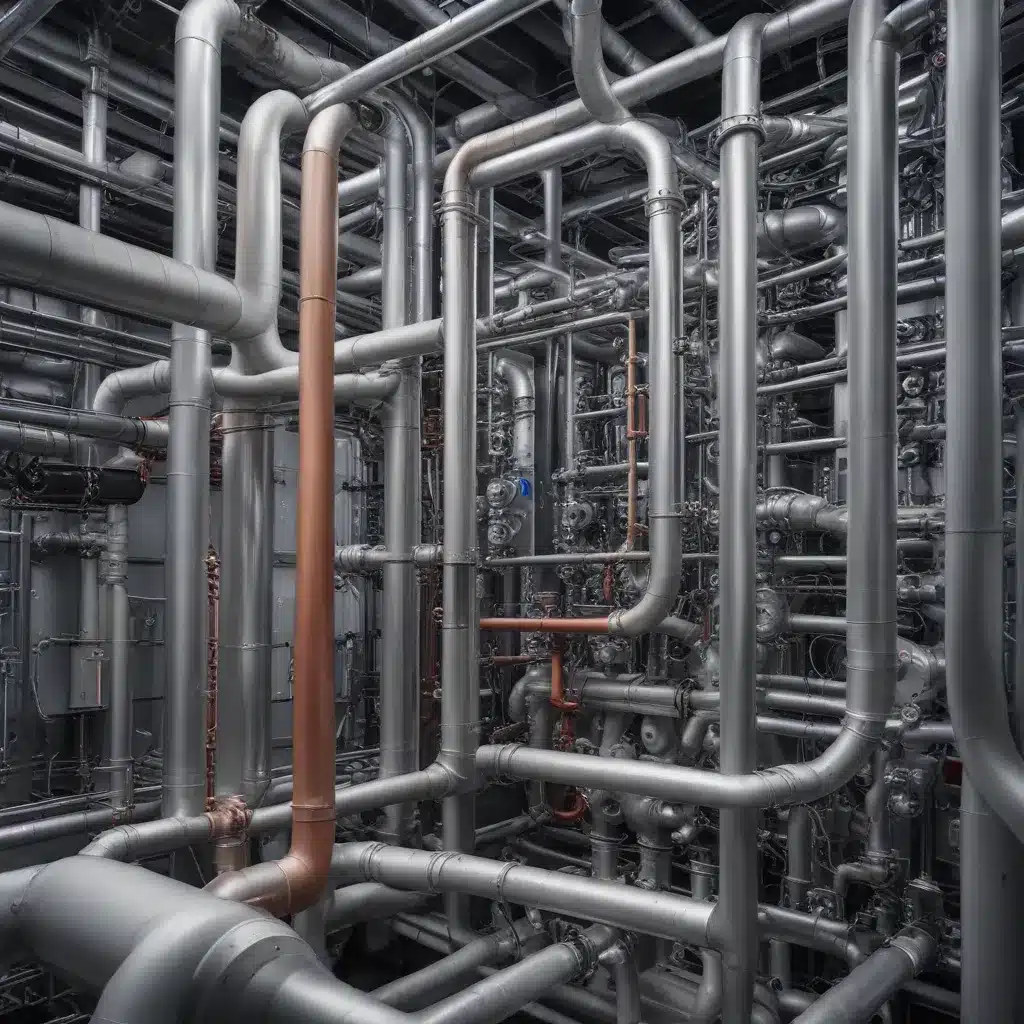
Optimizing Energy Efficiency and Sustainability in Industrial Processes
As the world grapples with the pressing challenges of climate change and energy scarcity, the role of industrial facilities in driving sustainable transformation has become increasingly critical. These facilities, often the backbone of our global economy, consume vast amounts of energy, primarily for heating, cooling, and various process applications. Improving the energy efficiency and environmental footprint of industrial operations is not only a moral imperative but also a strategic necessity for maintaining a competitive edge in today’s market.
At the heart of this evolution lies the humble yet powerful heat exchanger – a ubiquitous technology that plays a pivotal role in driving energy efficiency and sustainability across a wide range of industrial sectors. From chemical processing and manufacturing to power generation and data centers, air-cooled heat exchangers have emerged as the go-to solution for tackling complex thermal challenges and unlocking new levels of operational excellence.
Unlocking the Power of Air-Cooled Heat Exchangers
Air-cooled heat exchangers, with their compact design and versatility, have become the workhorse of the industrial landscape. These innovative systems leverage the natural cooling capacity of air to transfer heat, eliminating the need for water-based cooling systems and reducing the overall environmental impact of industrial operations.
One of the key advantages of air-cooled heat exchangers lies in their ability to adapt to diverse process requirements. Whether it’s managing the heat loads in a petrochemical refinery, optimizing the efficiency of a data center’s cooling system, or enhancing the performance of a combined heat and power (CHP) plant, these heat exchangers can be engineered to meet the specific needs of the application, ensuring optimal thermal management and energy savings.
Embracing Intelligent Design and Advanced Materials
The latest advancements in heat exchanger design and materials have further bolstered the efficiency and sustainability of these systems. Cutting-edge computational fluid dynamics (CFD) modeling, for instance, enables engineers to optimize the airflow patterns and heat transfer characteristics of air-cooled heat exchangers, maximizing their performance while minimizing energy consumption.
Moreover, the introduction of innovative materials, such as high-performance alloys and specialized coatings, has revolutionized the durability and reliability of these heat exchangers. These advanced materials not only enhance thermal efficiency but also improve resistance to corrosion, fouling, and other environmental stressors, extending the service life of the equipment and reducing maintenance requirements.
Harnessing the Power of Digitalization and Analytics
The rise of Industry 4.0 and the Internet of Things (IoT) has ushered in a new era of intelligent heat exchangers, where digital technologies and advanced analytics play a pivotal role in optimizing performance and driving continuous improvements.
By integrating sensors, data acquisition systems, and cloud-based analytics platforms, industrial facilities can now monitor the real-time performance of their air-cooled heat exchangers, identifying potential issues before they escalate and optimizing operating parameters to achieve maximum efficiency. This data-driven approach to heat exchanger management not only enhances energy savings but also improves overall equipment effectiveness (OEE), reducing costly downtime and maintenance.
Advancing Thermal Management in Specialized Applications
Beyond the realm of traditional industrial processes, air-cooled heat exchangers have also emerged as critical components in specialized applications, where their versatility and efficiency shine.
In the rapidly growing data center industry, for instance, air-cooled heat exchangers are increasingly being deployed to manage the immense heat loads generated by server racks and other computing equipment. By leveraging the natural cooling capacity of air, these systems can reduce the energy consumption and carbon footprint of data centers, contributing to a more sustainable digital infrastructure.
Similarly, in the renewable energy sector, air-cooled heat exchangers play a vital role in optimizing the performance and reliability of concentrated solar power (CSP) plants, where they are used to manage the thermal energy generated by the solar thermal collectors.
Driving the Circular Economy through Heat Recovery
One of the most impactful ways in which air-cooled heat exchangers are contributing to sustainability is through their ability to facilitate heat recovery and reuse. By capturing waste heat generated in industrial processes and repurposing it for heating, cooling, or other applications, these heat exchangers are paving the way for a more circular, resource-efficient economy.
This concept of “waste heat recovery” not only reduces the overall energy consumption of industrial facilities but also minimizes the environmental impact of their operations. By tapping into the thermal energy that would otherwise be lost, air-cooled heat exchangers help industrial enterprises to maximize the utilization of their resources, aligning with the principles of the circular economy.
Maintaining Peak Performance through Proactive Maintenance
To ensure the long-term reliability and optimal performance of air-cooled heat exchangers, a proactive approach to maintenance is essential. Regular inspections, cleaning, and preventive maintenance can help industrial facilities identify and address potential issues before they escalate, minimizing downtime, improving energy efficiency, and extending the service life of the equipment.
By partnering with experienced service providers or leveraging digital maintenance tools, industrial operators can develop a comprehensive maintenance strategy that not only maintains the integrity of their air-cooled heat exchangers but also optimizes their thermal performance and energy efficiency over time.
Conclusion: Embracing the Future of Sustainable Industrial Processes
As the world moves towards a more sustainable and energy-efficient future, the role of air-cooled heat exchangers in industrial facilities has become increasingly critical. These versatile, intelligent, and energy-efficient systems offer a powerful solution for tackling complex thermal challenges, driving energy savings, and reducing the environmental footprint of industrial operations.
By embracing the latest advancements in heat exchanger design, materials, and digital technologies, industrial leaders can unlock new levels of operational excellence, contribute to the circular economy, and play a pivotal role in shaping a more sustainable industrial landscape. With the right strategies and partnerships, the humble air-cooled heat exchanger can become a powerhouse of energy efficiency and environmental stewardship, paving the way for a brighter, more sustainable tomorrow.
To learn more about how Aircooledheatexchangers.net can help your industrial facility optimize its thermal management and energy efficiency, explore our comprehensive range of air-cooled heat exchanger solutions and services.

